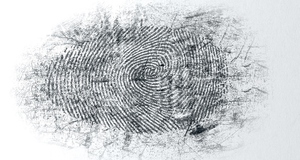Debating Genetics as a Predictor of Criminal Offending and Sentencing
By
2011, Vol. 3 No. 11 | pg. 1/1
KEYWORDS:
Since the beginning of criminological research there has been an ongoing debate on the correlation between genetic characteristics and criminal behavior. There have been numerous studies and experiments conducted to help eliminate some of the unknowns related to the field of biological criminology and genetics. Genetic mutations have been disregarded as a consideration when developing guidelines for the causes of criminal behavior and determining the level of violence involved. Recent studies in behavioral genetics indicate that some violent criminals are genetically predisposed to violent behavior. One study has found that a mutation in the structural gene for monoamine oxidase A gives rise to an acute build-up of neurotransmitters associated with the body’s ‘fight or flight’ responses to stressful situations (Evansburg 2001). Many criminologists do not totally disregard genetic characteristics as a means of determining who will commit crimes but they do believe that “a genetic disorder may predispose an individual to aggressive behavior [but] cannot cause that individual to commit a violent crime” (Evansburg 2001). Criminologists who once believed that genetics was a sole indication that would dictate a person’s criminal tendencies are now being discounted as more recent and logical studies are being conducted. In many cases these outdated data are being looked upon as being bad or biased research. As the popularity of the idea of using genetics as a means of predicting criminal behavior has decreased, the realization that genetics may in fact play a role in criminal offending is on the increase. “Mendel established the foundations for modern genetics in a paper that was ignored for 35 years.”This idea does not necessarily afford criminologists the ability to determine from birth whether or not a person is going to be a delinquent youth or even a criminal offender later in life. It does, however, pose the question of to what degree of impact, if any, a person’s genetic makeup has on their likelihood of becoming criminal. Some criminologists indicate that genetics have little to no affect on criminal behavior but rather estimated levels of self-control identify potential criminal behavior. For instance, “Gottfredson and Hirschi (1990, p.97) are clear in their assertion that ‘ineffective child rearing’ is the ‘major’ cause of low self-control” (Unnever, Cullen, and Pratt, 2003). Gottfredson and Hirschi clearly downplay the possibility that low self-control has a genetic/biological component. For example, after careful analysis of adoption studies, they argue that this research provided “strong evidence that the inheritance of criminality is minimal . . . We conclude that the ‘genetic effect’ . . . is near zero” (p. 60). Unnever, Cullen, and Pratt (2003) examine the impact of attention deficit hyperactivity disorder (ADHD) on self-control and delinquency and reviewed Gottfredson and Hirschi’s general theory of crime. Some criminologists argue that certain body types were not only associated with, but actually responsible for, the development of specific personality styles and temperaments (Walters and White). This would mean that the mere physical structure of a person’s body could predict whether or not that person was a criminal offender or was going to become one later in life. However, many criminologists who believe that the genetic make up of a person is a positive predictor to criminal behavior admit that it involves more than just simply looking at a person and labeling them as a criminal. Genetics is a give and take subject when dealing with criminology. According to research conducted by Walters and White, genetic factors are undoubtedly correlated with various measures of criminality. They also go on to say that genetic research on crime must be better organized theoretically and until methodological improvements are made and a coherent theoretical framework found . . . little progress is anticipated in the effort to determine whether genes play a meaningful role in the evolution of criminal behavior. Those who feel as if people with genetic disorders and mutations are inferior to the rest of the human race associate themselves with Eugenic theories. Eugenicist criminologists such as Earnest A. Hooton believed that the elimination of people who have unfavorable genetic characteristics would improve the human species. Hooton also believed that criminals belonged to a class of hereditary degenerates. Those who endorse eugenics consider themselves superior to the dysgenic; they must be able to identify (but not identify with) the inferiors whom they hold responsible for social problems (Rafter, 2004). For the most part eugenic criminology existed during the nineteenth century but gradually began to diminished in popularity soon after. In recent years however, the idea of genetics and biological criminology has started to reemerge and have a presence in modern research studies. Akers (1994) examined the relationship between “biology” and crime and concluded that the evidence supporting such a link was weak (Wood et al, 1997). Depression has long been a focal point of criminological research. Criminologists have been asking the question of whether or not depression has a direct affect on a person’s likelihood of participating in criminal behavior. Once this question has been asked, it poses a new question; is depression inherited through genetics? Strain theorists like Robert Agnew, claim that law violation helps reduce depression by serving as a coping mechanism. This concept would classify depression as a disorder brought on by and controlled by external conditions, disregarding the idea of depression as a genetic, or internal, characteristic. “Psychologists have proposed a link between antisocial behavior and theoretical physiological systems within the brain that are presumed to modulate impulse expression” (Gray, 1977), shedding new light on the psychological, internal characteristics behind aggressive and non-aggressive criminal behavior. “Researchers at Johns Hopkins University . . . have reported highly aggressive behavior in mice that were genetically engineered to lack the brain chemical nitric acid synthase (nNOS) . . . the nNOS deficient mice initiated three to four times as many aggressive encounters as normal mice, and displayed only one-tenth as much submissive behavior as normal mice” (Evansburg, 2001). When a researcher uses terms such as “normal” in data collected through an experiment, it always opens the results to criticism and questions are raised as to what is meant by “normal.” One’s idea of what is “normal” is often drastically different than another’s, resulting in confusion and lack of confidence in the reliability of the research. Some arguments concerning the correlation between genetics and criminal behavior have been spurred by unfounded claims. Criminologists have gone so far as to argue that racial and ethnic characteristics can predict whether or not a person will be criminally active. These statements are typically derived from studying statistical data collected from various sources. Social structure theorists counter these claims by saying these data are inconclusive on the grounds that members of ethnic and racial minority groups and members of lower class society, are more likely to be arrested for the same crimes that are committed by those who are white and members of upper class society. “Blacks and Hispanics who had been stopped [by police] were more likely than were whites to report that they had been ticketed, arrested, handcuffed, or searched by police officers, and they were also more likely to say that officers had threatened or used force against them” (Weitzer and Tuch, 2002). These types of research are usually based on quantitative rather than qualitative research, which is more likely to create biased results from the researcher conducting the study. Using race and ethnicity to argue that genetics is directly correlated to criminal behavior has been viewed as a naive and inadequate conclusion and regarded among many criminologists as unreliable sources for collecting scientific data. The number of criminologist that do not believe that a person’s genetic characteristics have a significant enough impact to be seriously considered when predicting criminal behavior have always outnumbered those who do believe genetics plays a significant role. In the case of Gottfredson and Hirschi, they adamantly deny that biology exerts any direct effect on criminal behavior, saying that “correlations between biology and crime… if statistically significant would be substantively trivial, and [there is] strong evidence that the inheritance of criminality is minimal [and any] ‘genetic effect’ is near zero” (Cauffman et al, 2005). On the other hand, deficits in the medial and lateral areas of the prefrontal lobe [which can be a genetic mutation] are frequently observed among subjects with disruptive behavior disorders, such as conduct disorder and attention deficit/hyperactivity disorder (ADHD). This indicates that there is both direct and indirect evidence that problematic frontal lobe functioning is linked to disruptive behavior disorders in childhood and delinquent and criminal behavior in adolescence and adulthood (Cauffman et al, 2005). Studies of criminal behavior among current and former mental health patients have been a way for biological criminologists to earn recognition in the growing field of criminology. As with any theory associated with criminological studies there are always multiple viewpoints on explaining those theories. Biological criminologists assert that criminal behavior is spawned from a lack of mental capacity. Others feel that even after mental illness is taken into account parental and positive social bonds can help prevent criminal behavior, turning an otherwise genetic or biological theory into a sociological theory creating a whole new list of arguments. Is criminal behavior inherited from parents or is it learned through observation and early childhood exposure to such behavior; what makes a person commit crime? This question has been the most asked question among criminologists since criminology came into existence. Many believe that that question still has not been, and may never be, sufficiently answered. Criminologists who are fans of rational choice theories claim that participating in criminal behavior is a rational, coherent choice that is made by the offender and has nothing to do with the offender’s genetic characteristics. “Rational choice theories of crime emerged for the purpose of explaining criminal behavior as a function of expected reward and punishment, weighted by the subjective probability of detection” (Piliavin et al 1986). Examining the external factors that motivate human behavior is a common practice among rational choice criminologists. Crime is encouraged or discouraged by external forces rather than internal genetically dictated factors. Using data from the Gluecks’ longitudinal study of Boston Males, Sampson and Laub found that the effect of childhood antisocial behavior on adolescent delinquency was largely mediated by changes in family management practices (Simons 1998). According to Maccoby and Martin (1993) past research has established that effective parents show warmth and support, monitor their child’s behavior, engage in consistent discipline, and eschew harsh punishments (Simons 1998). As Gottfredson and Hirschi (1990) emphasize, low self-control in childhood is the individual-level cause of crime. They also state that low self-control develops from inattentive and lax parental supervision, making children unable to resist the momentary temptations of wrongdoing. “Individuals with low self-control fit poorly into conventional society, and so they end up in weakened or broken social relationships” (Entner Wright et al, 1999). This theory, too discounts the idea of genetics being a cause or indicator of criminal behavior altogether. According to this theory of Gottfredson and Hirschi, criminal behavior is caused solely by sociological factors rather than biological factors. Deterrence theory disregards genetic consideration altogether, claiming that the fear of punishment deters people from committing crimes. “Those who believe crime is wrong and who express greater fear of informal sanctions are less likely to engage in delinquent activity” (Bishop 1984). While not accepting completely that genetics cause crime, general strain theory does recognize a correlation between the crime committed and the offender’s genetic traits. The incorporation of such traits represents integration between strain theory and the rapidly growing research on behavioral genetics and crime (Walsh 2000). The argument of genetics has played a major role in the way criminal offenders are tried and sentenced. Evansburg writes that while evidence of a genetic predisposition to violent behavior may potentially be significant, it would be imprudent, as well as politically infeasible, to allow genetic determinism to substitute for the assumptions of free will in the criminal law. She also says that the law must proceed with caution as it attempts to incorporate new genetic discoveries into traditional legal doctrine. When using genetics as a defense, the accused must be able to prove, without a doubt, that their criminal actions were directly related to the genetic disorder that they suffer from. This would be a very difficult burden to prove for the defense and would likely be a weak and unsuccessful course of action considering the relatively new idea of the relationship between criminal behavior and genetic makeup. The problem with using genetics as a defense in criminal trials is the fact that many times a specific genetic mutation is family specific. A genetic mutation may be present in one family and may only be found in a very small number of other families or individuals. Therefore, there would have to be expert testimony and examination to ensure that the genetic mutation in question was scientific knowledge, and would be inadmissible in court otherwise. “If evidence of a genetic predisposition to violence is adequately substantiated through further research, the Sentencing Commission should implement a new policy statement authorizing judges to impose reduced sentences for violent offenders who successfully demonstrate a genetic predisposition to violence” (Evansburg, 2001). In 1992, Bruce G. Link, Howard Andrews, and Francis T. Cullen asked the question, “Do mental patients and former mental patients have higher rates of violent and illegal behavior than non-patients and can any differences that exist be explained by factors other than mental illness?” In their research they found that the simple assertion that mental patients and former mental patients are on average no more dangerous than non-patients is incorrect. They also say that the connection between psychotic symptoms and violence underscores the need to implement policy initiatives that insure effective treatments for people who develop psychotic symptoms. On the other hand they conclude that while the fact that psychotic symptoms explained differences between mental patients and never treated residents in recent violence, this does not mean that psychotic symptoms are a potential source of violent behavior in our society. “A fundamental principle of the American criminal justice system is that punishment for a crime should be proportional to the blameworthiness of the individual who committed that crime” (Evansburg, 2001). Assertions such as this argue that not all criminals are created equal and not all criminal offenders should receive the same punishment for the same crime based solely on genetic makeup and mental capacity. People who commit crimes and are proven to be mentally incapable of discerning between right and wrong should be judged and sentenced using less harsh tactics as in the case of a “normal,” mentally sound individual. A genetic predisposition toward violence that significantly impairs the ability to control behavior is an unforeseen circumstance in which the United States Sentencing Commission affords a judge the authority to impose individual sentences when they deem justified. Evansburg (2001) also points out the fact that the guidelines set by the Sentencing Commission purport to serve justice by imposing similar sentences for similar crimes; but when similar acts of violence are committed by individuals with dissimilar capacities for self-control, justice is not served by assigning them equal blame, and thus, equal punishment. If two offenders with different genetic characteristics commit the same crime, the responsibilities of the two offenders would be different and their sentences should reflect that difference. Most sociological criminologists however, would argue that these types of defenses to criminal offending are merely a means of “beating” the system and that crime is crime and should hold the same severity of punishment for all whom commit a particular crime. ReferencesAgnew, Robert, Timothy Brezina, John Paul Wright, and Francis T. Cullen. “Strain, Personality Traits, and Delinquency: Extending General Strain Theory.” Criminology 40.1 (2002): 41. Caspi, Avshalom, Terrie E. Moffitt, Phil A. Silva, and Robert F. Krueger. “Are Some People Crime-Prone? Replications of The Personality-Crime Relationship Across Countries, Genders, Races, and Methods.” Criminology 32.2 (May 1994): 163. Cauffman, Elizabeth, Lawrence Steinberg, and Alex R. Piquero. “Psychological, Neuropsychological and Physiological Correlates of Serious Antisocial Behavior in Adolescence: The Role of Self-Control.” Criminology 43.1 (Feb. 2005): 133. De Coster, Stacy and Karen Heimer. “The Relationship Between Law Violation and Depression: An Interactionist Analysis.” Criminology 39.4 (Nov. 2001): 799. Entner Wright, Bradley R., Avshalom Caspi, Terrie E. Moffitt, and Phil A. Silva. “Low Self-Control, Social Bonds, and Crime: Social Causation, Social Selection, or Both?” Criminology 37.3 (Aug. 1999): 479. Evansburg, Amanda R. “’But Your Honor, It’s in His Genes’ The Case For Genetic Impairments as Grounds For a Downward Departure Under The Federal Sentencing Guidelines.” The American Criminal Law Review 38.4 (Fall 2001): 1565. Hechter, Michael and Satoshi Kanazawa. “Sociological Rational Choice Theory.” Annual Review of Sociology Vol. 23 (1997): 191. Link, Bruce G., Howard Andrews, and Francis T. Cullen. “The Violent and Illegal Behavior of Mental Patients Reconsidered.” American sociological Review 57.3 (Jun. 1992): 275-92. Rafter, Nicole. “Earnest A. Hooton and The Biological Tradition in American Criminology.” Criminology 42.3 (Aug. 2004): 735. Walters, Glenn D., and Thomas W. White. “Heredity and Crime: Bad Genes or Bad Research?” Criminology 27.3 (1989): 455. Weitzer, Ronald and Steven A Tuch. “Perceptions of Racial Profiling: Race, Class, and Personal Experience.” Criminology 40.2 (May 2002): 435. Wood, Peter B., Walter R. Gove, James A. Wilson, and John K. Cochran. “Nonsocial Reinforcement and Habitual Criminal Conduct: An Extension of Learning Theory.” Criminology 35.2 (May 1997): 335. Suggested Reading from Inquiries Journal
Inquiries Journal provides undergraduate and graduate students around the world a platform for the wide dissemination of academic work over a range of core disciplines. Representing the work of students from hundreds of institutions around the globe, Inquiries Journal's large database of academic articles is completely free. Learn more | Blog | Submit Latest in Law & Justice |


















